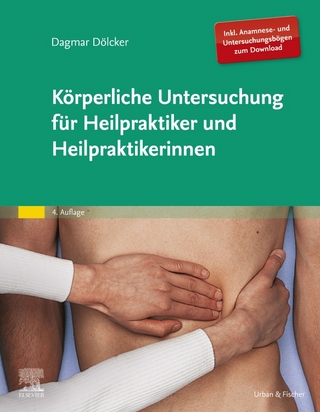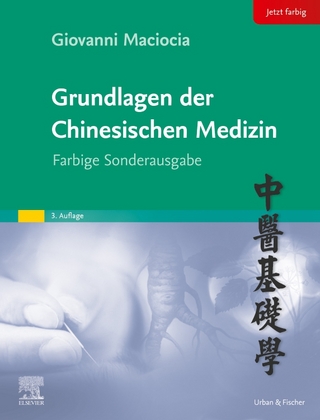
Acupuncture
Routledge (Verlag)
978-1-4665-8192-0 (ISBN)
Presenting a scientific, anatomical approach to acupuncture, this volume discusses:
The basics of the nervous system
Acupuncture points located in the head and face, formed by the cranial nerves
The cervical plexus, which forms acupuncture points in the neck region
Acupuncture points formed by the brachial plexus in the upper limbs, spinal nerves in the body trunk, and the lumbar–sacral plexuses in the lower limbs
The anesthesia effect of biochemical substances in the nervous system
The measurement and quantification of pain
Applications of acupuncture in clinical practice, from cases easy to treat to those more challenging
Theories on the future of acupuncture
The treatment of pain, in general, is controversial, as many therapies have unintended consequences and side effects. Acupuncture provides a therapy that is quick, easy to perform, and requires no medications. This volume enables physicians, osteopaths, pain specialists, chiropractors, and other health professionals to perform this effective treatment for their patients who experience both chronic and acute pain.
Houchi Dung earned a Ph.D. in anatomy from the University of Louisville in 1970. Soon after, he accepted a faculty position in the Department of Anatomy, School of Medicine, at the University of Texas Health Science Center at San Antonio, which he held until his retirement in 2002. His main responsibilities were teaching gross human anatomy to medical and dental students and conducting research on a number of neurological mutations in mice. During his 31-year academic career, he published 24 papers on the field of acupuncture from his clinical experience. He has published several books on acupuncture and pain—three in English and three in Chinese.
Introduction. Anatomy in Acupuncture. General Consideration. Identity of Acupoints. All in the Sensory Nerves. Efferent Fibers. Afferent Fibers. Muscular Nerve Branches. Cutaneous Nerve Branches. Anatomical Features Contributing to the Formation of Acupoints. Acupoints of the Cranial Nerves. Cranial Nerves Without Acupoints. Cranial Nerves with Acupoints. Trigeminal Nerve. Facial Nerve. Glossopharyngeal Nerve. Vagus Nerve. Spinal Accessory Nerve. Acupoints in the Neck Region. Boundaries of the Neck. Formation of the Cervical Plexus. Acupoints of the Cutaneous Branches. Acupoints of Muscular Branches. Acupoints in the Upper Limb. Topography of the Upper Limb. Organization of the Brachial Plexus. Acupoints on the Pectoral Region. Acupoints Over the Scapular Region. Arm and Forearm. Wrist and Hand. Acupoints in the Body Trunk. Defining a Typical Spinal Nerve. Composition of Fibers in the Typical Spinal Nerves. Distributions of Acupoints. Acupoints On Back Of The Neck. Acupoints on the Dorsal Surface of the Chest. Acupoints on the Lumbar and Sacrum. Acupoints in the Front. Lateral Side of the Chest Cage. Acupoints in the Lower Limb. Regional Anatomy. Lumbar Plexus. Sacral Plexus. Acupoints of the Lumbar Plexus. Acupoints of the Sacral Plexus. Distributions to the Thigh. Distributions in the Popliteal Fossa. Acupoints on the Posterior Compartment of the Leg and Ankle. Acupoints on the Lateral Compartment of the Leg. Acupoints on the Anterior Compartment of the Leg. Acupoints on the Foot. Physiology in Acupuncture. Electrical Phenomena of the Body. Electrical Activity in Acupoints. Dynamic Nature of Acupoints. Three Phases of Acupoints. Physical Properties of Acupoints. Biochemistry in Acupuncture. Biochemistry in Relation to Acupuncture. Terminologies in Neurotransmitters. Relevance of Neurotransmitters. Importance of Endorphin. Other Neurotransmitters. Immediate Acupuncture Reactions. Reactions After Acupuncture. Pathology in Acupuncture. Conventional Wisdom in Pathology. Pathological Origins. Endogenous Origins. Exogenous Origins. Modes for Trigger Points to Appear. Combination of Systemic and Regional Appearances. A Special Case. Psychology in Acupuncture. Psychology of Pain. True or False. Historical Prospect of Pain Perception. Mental Attitude Toward Pain. The Vicious Cycle of Pain. Rebutting Acupuncture as Placebo. Pain and Measurement. A Challenge and A Puzzle. Measurements of Pain. Subjective Pain Versus Objective Pain. Ranking the Trigger Points. Trigger Points in Four Groups. Trigger Points on the Spinous Processes. Results of Pain Measurement. Acute Versus Chronic Pain. Good to Excellent Applications. General Guidelines. Samples of Pain for Demonstration. Defining Good to Excellent Results. Pain in the Face and Head. Pain in the Neck and Shoulders. Pain in the Upper Limbs. Pain in the Body Trunk. Pain in the Lower Limbs. Applications with Mixed and Limited Results. Defining Mixed and Limited. Irrelevant to Pain. Subjective Pain Perceived. Pain in the Face and Head. Pain in the Neck and Shoulder. Pain in the Upper Limb. Pain in the Body Trunk. Pain in the Lower Limb. Diffuse Pain. Difficult Patients with Poor Results. Connecting Difficult and Poor. Profiles of Difficult Patients. Pain in the Face and Head. Difficult Pain from the Neck to the Fingers. Pain After Surgery. Phantom Limb Pain. Spondylitic Abnormalities. Reflex Sympathetic Dystrophy. Tailbone Fracture. Difficult Patients with Different Results. Index.
| Erscheint lt. Verlag | 15.11.2013 |
|---|---|
| Zusatzinfo | 15 Tables, black and white; 107 Illustrations, black and white |
| Verlagsort | New York |
| Sprache | englisch |
| Maße | 178 x 254 mm |
| Gewicht | 635 g |
| Themenwelt | Sachbuch/Ratgeber ► Gesundheit / Leben / Psychologie ► Alternative Heilverfahren |
| Medizin / Pharmazie ► Medizinische Fachgebiete ► Schmerztherapie | |
| Medizin / Pharmazie ► Naturheilkunde ► Akupunktur / Akupressur | |
| Medizin / Pharmazie ► Naturheilkunde ► Phytotherapie | |
| ISBN-10 | 1-4665-8192-1 / 1466581921 |
| ISBN-13 | 978-1-4665-8192-0 / 9781466581920 |
| Zustand | Neuware |
| Haben Sie eine Frage zum Produkt? |
aus dem Bereich


